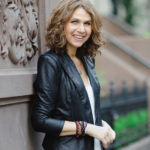Two Free Gifts from Adyashanti!
Sounds True is happy to offer two free inspiring teachings from Adyashanti: a special video teaching from Resurrecting Jesus, and an excerpt from Falling into Grace. We hope you find them helpful on your own path of healing and awakening.
Learn more about Adyashanti’s new book Resurrecting Jesus here.
Enjoy!

The Healing Pulse Sounds True Spotify Playlist
Sounds True is on Spotify!
Need some tunes for healing and self-compassion? Experience the moving compositions of music guided by the flow of prana from the Sounds True Ultimate Collection!
Some of our featured artists are Jai Uttal, Nawang Khechog, Maneesh de Moor, Bruce Lipton, and Michael Brant DeMaria.
4 Ways to Rest This Holiday Season
Giving yourself permission to rest during the holiday time is perhaps the most radical—and life-saving—act you can do. Here are a few easy ways to give yourself the gift of rest. Your family and friends will thank you—and might just lie down too!
Meditate Every Morning or Evening
If you have 15-minutes, try practicing yoga nidra meditation, a guided meditation also known as yogic sleep. This is supreme relaxation. You can find yoga nidra online. If you don’t have that kind of time, silent meditation for even just 3 minutes every day can feel restful. Close your eyes, and notice your breath. You can repeat a mantra or a relaxing word as you breathe in and out. If family is visiting and you don’t have a quiet spot in the house, meditate in your car or even in the bathroom!
Breath Counting
We tend to forget just how restful it can feel to breathe. Breath counting pulls the mind away from stress and towards a more centered, balanced feeling. To practice, count backwards slowly, with rhythmic inhalations and exhalations, and say to yourself as you breathe, “Breathing in, 11, breathing out, 11, breathing in, 10, breathing out, 10.” And so on, counting down to one. You do this while breathing the whole body or engage a chakra and breathe into that area. Befriend the breath.
Walking Meditation (extra points for bare feet!)
If you’re stressed over the holidays, walk in silence on the ground for five minutes or more. As Thich Nhat Hanh says, “Walk as if your feet are kissing the earth.” Walking bare-footed is ideal—outside or in your home. More and more evidence suggests that we need the Earth’s electrons for our well-being—it improves sleep, pain management, and stress. If you can’t walk in silence, try cooking your holiday meal mindfully in bare feet, Your body will thank you.
Watch the Sun Set or Rise
Sunrise and sunset are mystical times of the day. Busy lives don’t easily give us access to the soul. During sunset and sunrise the veils of illusions, which pull us away from our truest self, are thin. We can see ourselves more clearly and feel more intuitive and creative. If you can, watch the sun set or rise in silence. Your nervous system will thank you.
 Karen Brody is a women’s well-being and leadership expert who helps women journey from worn out to well rested and then dream big in their work and lives. A certified yoga nidra instructor, she is the author of Daring to Rest: Reclaim Your Power with Yoga Nidra Rest Meditation, founder of Daring to Rest, a yoga nidra-based self-empowerment program for women. She has an MA in Women and International Development from the Institute of Social Studies in the Netherlands, and a BA in sociology from Vassar. Karen is also a playwright, and Birth, her theater-for-social-change play has been seen in over 75 cities around the world. She is the mother of two boys and met her husband in the Peace Corps. She resides in Washington, DC, but considers the world her home.
Karen Brody is a women’s well-being and leadership expert who helps women journey from worn out to well rested and then dream big in their work and lives. A certified yoga nidra instructor, she is the author of Daring to Rest: Reclaim Your Power with Yoga Nidra Rest Meditation, founder of Daring to Rest, a yoga nidra-based self-empowerment program for women. She has an MA in Women and International Development from the Institute of Social Studies in the Netherlands, and a BA in sociology from Vassar. Karen is also a playwright, and Birth, her theater-for-social-change play has been seen in over 75 cities around the world. She is the mother of two boys and met her husband in the Peace Corps. She resides in Washington, DC, but considers the world her home.
The community here at Sounds True wishes you a lovely holiday season! We are happy to collaborate with some of our Sounds True authors to offer you wisdom and practices as we move into this time together; please enjoy this blog series for your holiday season.
To help encourage you and your loved ones to explore new possibilities this holiday season, we’re offering 40% off nearly all of our programs, books, and courses sitewide. May you find the wisdom to light your way.
The Psychology of Loving Awareness with Jack Kornfield
The Psychology of Loving Awareness with Jack Kornfield, PhD
A Two-Day Training in Transforming Difficulty into Ease and Well-Being
Loving awareness, mindfulness, and compassion have enormous power to benefit every human life. These time-tested tools of Eastern psychology are widely supported by modern neuroscience in more than 3,000 studies and research papers from the past 25 years. With The Psychology of Loving Awareness, master teacher Jack Kornfield invites professionals and meditators alike to join him in a retreat-like setting in San Diego, California to discover the transformative practices from Buddhist psychology that are now being applied in therapy, education, medicine, business, law, athletics, the arts, and in the personal lives of millions.
This two-day training will offer the theory and practice of age-old methods for transforming difficulty into ease and well-being. Through guided practices, wisdom teachings, experiential exercises, case studies, healing stories, dialogue, and inner training, Jack Kornfield will provide an immersive demonstration of the most important principles of Buddhist psychology for awakening the heart and mind—offering skills to aid professionals and deepen the practice of meditators, including:
- Directed healing
- Inner witnessing
- Compassion and forgiveness
- Refining clarity of intention
- Composure in stressful circumstances
- Mindfulness towards the body, thoughts, and emotions
- Fostering resilience, adaptability, and a gracious, wide perspective
When we see the spirit of a leader like Nelson Mandela, the Dalai Lama, or Aung San Suu Kyi, we come to realize what is possible when we meet the world from a place of loving awareness. By cultivating our capacity for balance and attunement, we can experience joyful embodiment of inner liberation, no matter what the outer circumstances.
Join us for two days of powerful practices, heartfelt reminders, clear teachings, personal skill-building, and clinical tools—shared in a warm, retreat-like setting with a loving and open community.

What is awakening? The Wake Up Festival presenters respond…
Last August, in the beautiful Rocky Mountains, over 800 people gathered together to explore the nature of spiritual awakening, and the mysteries of opening the human heart. Shot on location during our first annual Wake Up Festival, the following video features 16 of our dear presenters and collaborators sharing what awakening means to them.
We invite you to join in the dialogue, as we have come to see that there are seven billion unique perspectives and doorways into awakening – one for each human soul. So, please, let us hear your voice, and your heart. What is spiritual awakening for you?
Creating an Altar in Your Home

Most of us come from secularized backgrounds from which spiritual forms, practices, and rituals have been scrubbed away, and we tend to have an aversion toward things like altars. However, most members of the world’s religious population keep a personal altar or shrine in their home, where they connect with and perform rituals to ancestors, saints, and the Divine, even amid modern, urban lives. In Western secular culture, altars have morphed into man caves, home theaters, or packed closets where we worship the gods of fame, beauty, and success. Consider how much time, energy, and prioritization we give these. Sound judgmental? Would it be judgmental for me to say a crisp, fresh kale salad is healthier than a bucket of fried chicken, or a run in the park more vitalizing than a television binge? We’ve been trained to abandon discernment—some things are better for us than others. It’s not all good.
If you can see an altar as psychological or emotional equipment—a bench press for the mind, augmentation for the heart—it might change your opinion. One of my teachers once said, “Clean your house as if the Dalai Lama was coming to visit for tea.” Now imagine sitting down at your altar with the Dalai Lama. It makes for an incredibly different experience if you picture an inspiring person right there with you. This may change your mind, not because of anything magical or special that is out there, but because the visualization shifts the quality of your experience. This altar is not for anybody else. Whose mind improves if you look at your altar and see a real Buddha instead of a bronze statue of a Buddha? Yours.
When Tibetan Buddhists set up altars, they put many objects on them, but three are central:
- Buddha statue (symbolizing awakened body)
- Scripture or other text (symbolizing awakened speech)
- Stupa or other shrine (symbolizing awakened mind)
So when you sit facing an altar, you become familiar with transforming your own body, speech, and mind.
The body or form of a Buddha (rupakaya), particularly the aspects of compassion and engagement, is represented by a statue placed in the middle of the altar. Your Buddha might be a Tibetan thangka painting or a simple stone. It might be a photograph of the Dalai Lama or Pope Francis, an image of Pema Chödrön or Martin Luther King, Jr. No matter who or what it is, imagine it’s the embodiment of a real, living Buddha inviting you to practice, inspiring you to evolve.
Here is how I set up my Buddhist altar, but you can always arrange things and add or take away things as it works for you:

Excerpted from Gradual Awakening: The Tibetan Buddhist Path of Becoming Fully Human, by Miles Neale.
MILES NEALE, PSYD, is among the leading voices of the current generation of Buddhist teachers and a forerunner in the emerging field of contemplative psychotherapy. He is a Buddhist psychotherapist in private practice, assistant director of the Nalanda Institute for Contemplative Science, and faculty at Tibet House US and Weill Cornell Medical College.
Dr. Neale is co-editor of and contributor to the groundbreaking volume Advances in Contemplative Psychotherapy: Accelerated Healing and Transformation and author of Gradual Awakening: The Tibetan Buddhist Path of Becoming Fully Human. For more visit milesneale.com.
Buy your copy of Gradual Awakening at your favorite bookseller!
Sounds True | Amazon | Barnes & Noble | Indiebound





